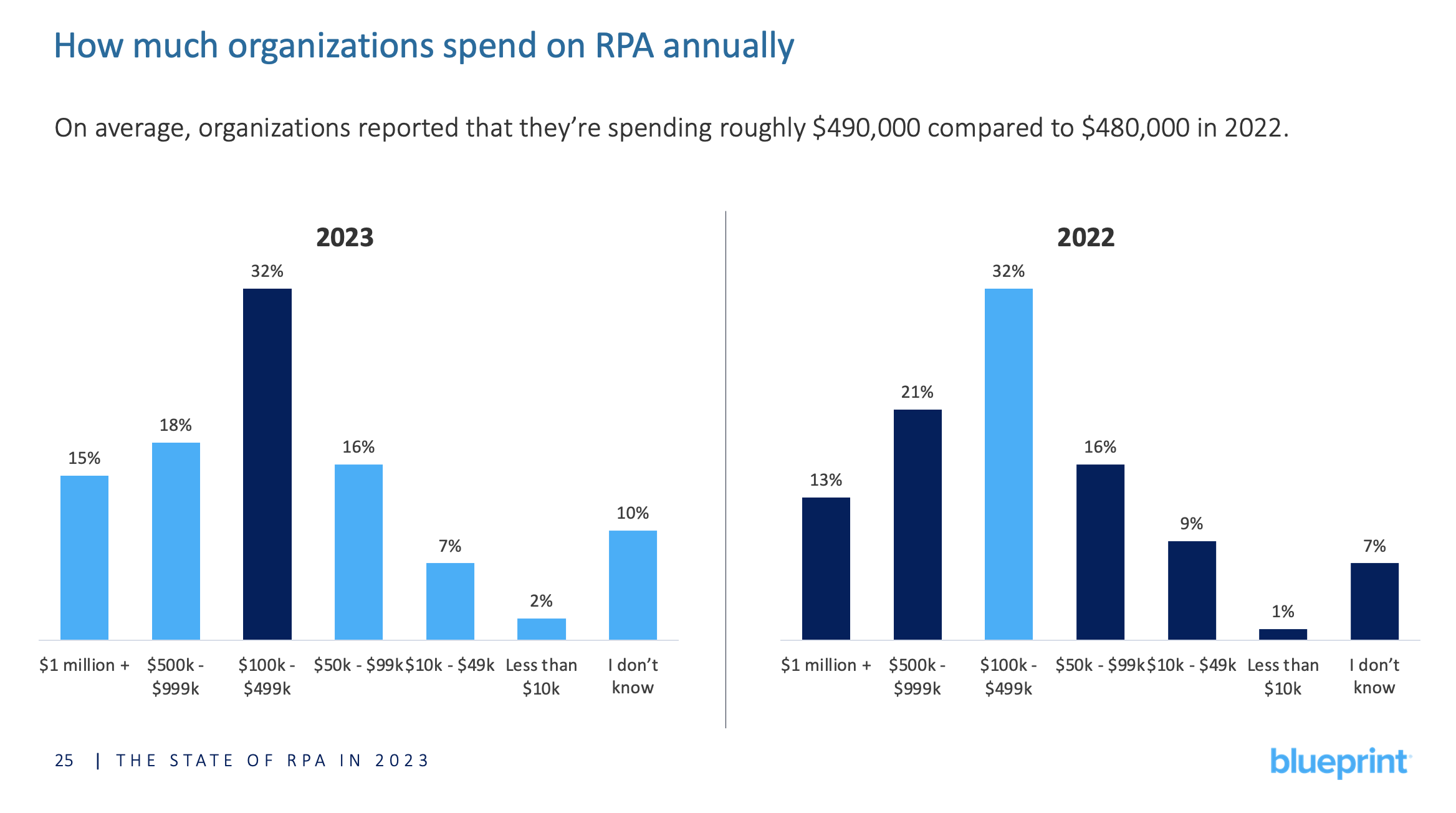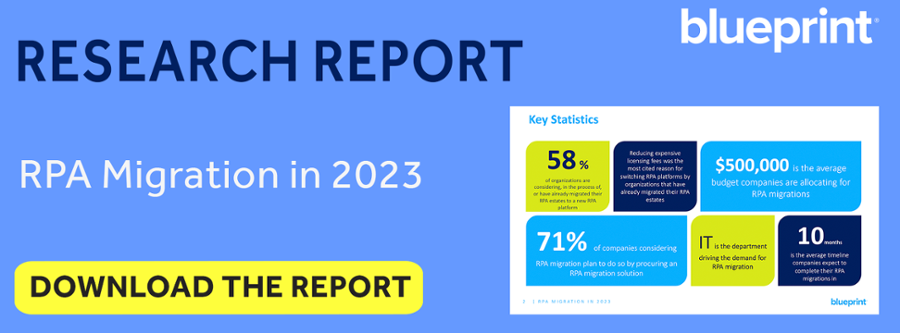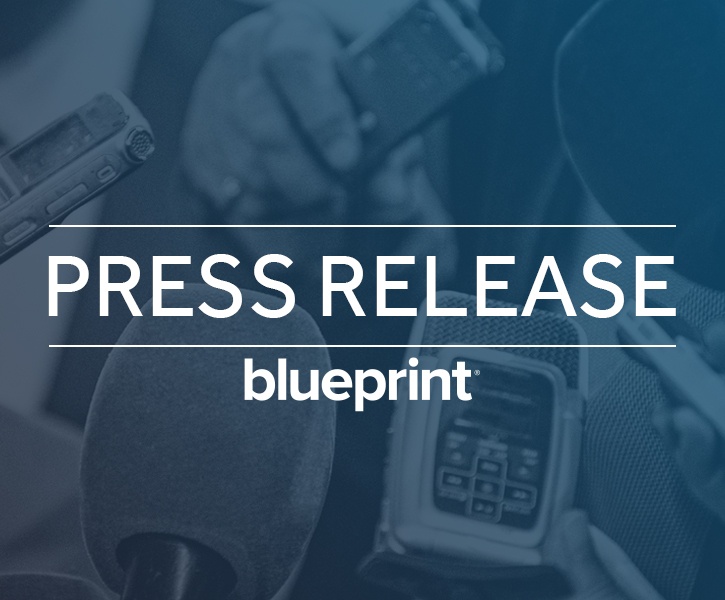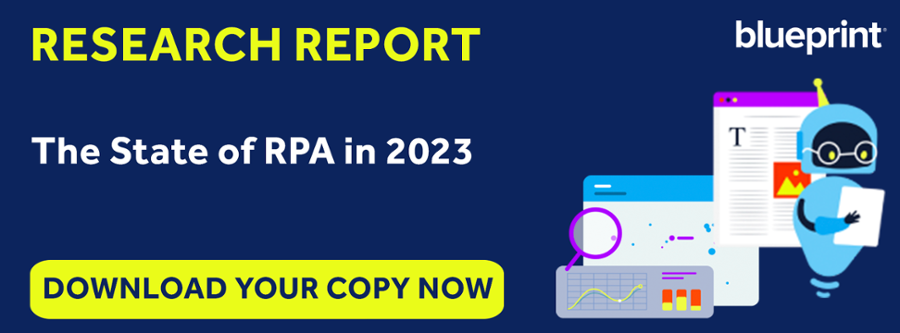How Much Does RPA Cost? Insights From 2023
The main reason RPA (robotic process automation) has enjoyed its accelerated adoption and implementation is due to the benefits it delivers. Reduced errors, higher quality, improved speed in process execution, better customer experiences, and, as a collective result, reduced operational costs.
One constant question those who have yet to take the RPA plunge have is: how much does it cost? Even automation leaders well on their way in their automation journeys wonder what their counterparts are spending to maintain their RPA practices.
We’ve laid out the total cost of ownership for RPA several times in these blogs:
- The Total Cost of Ownership Components to Consider for RPA Migrations
- How Much Does Robotic Process Automation (RPA) Really Cost?
Those assets, however, illustrate all the components that will make up your automation costs. With the research Blueprint performs every year, we can also track how that investment is evolving with real data. Here then, is the insider’s look at what organizations are spending on their automation programs and how that’s changed since 2022.
How Much RPA Costs in 2023: A Closer Look at the Numbers
According to Blueprint’s research, organizations reported spending an average of $490,000 on RPA annually. This is a slight uptick from 2022, when the figure hovered around $480,000.

This growth might seem negligible at first glance, but there are reasons that explain both an increasing trend and why the growth may not be as steep as you’d think.
The Reasons Behind the Growth of RPA’s Total Cost of Ownership
RPA’s total cost of ownership is growing because of a combination of multi-dimensional reasons that include:
- Rising licensing costs – legacy RPA platforms and vendors are increasing their licensing costs.
Read More: Why Have RPA Vendors Raised Their Prices? - Growing RPA teams – According to Blueprint’s research, organizations are expanding the size of their automation teams. 50% have already established RPA Centers of Excellence, and 40% of those who reported they don’t have one have plans to set one up soon.
With increased headcounts to manage and scale RPA, operational expenses and automation’s total cost of ownership will naturally increase. - RPA toolchains are growing – organizations reported having an average of 5 tools in their automation toolchains. Besides an RPA platform for automation development, delivery, orchestration, and monitoring, the other tools that might be used include work management tools like Jira, testing suites, and process discovery tools to identify business tasks and processes as candidates for automation.
With more tools to augment and aid automation design, delivery, and monitoring, expenses will also increase.
While the growth in automation costs was not as dramatic as some would have expected, there are reasons for that as well.
The Reasons Behind the Marginal Growth of RPA’s Total Cost of Ownership
Even though legacy RPA providers are increasing their licensing fees and costs, there are a couple of reasons that could be throttling a steeper growth in expenses. They include:
- Reason #1: Migrating to More Cost-Effective RPA Platforms Like Microsoft Power Automate
Blueprint’s research also indicated that there is a very strong interest in switching RPA providers to reduce costs and leverage better compatibility with existing investments in enterprise architecture. As a result, many organizations are migrating their RPA estates to Microsoft Power Automate to take advantage of Microsoft’s dramatically reduced licensing fees and its ease of use.
- Reason #2: Eliminating Waste
This year’s research also indicated a decrease in the average size of RPA estates. The assumption is that mature automation programs have started auditing their RPA portfolios and eliminating redundant or underperforming processes that were not delivering justifiable returns.
By eliminating wasteful automations, organizations are able to save on the costs those processes would have incurred had they been in production.
How Much RPA Costs by Geography and Organization Size
From a geographical standpoint, the United States emerged as the biggest spender in RPA. Respondents from the USA reported that they spend an average of $600,000 annually.
Breaking down the numbers by organization size, larger enterprises – especially those with a workforce exceeding 5,000 – are leading the pack. They typically spend an above-average amount nearing $550,000 annually on automation. This data underscores the inference that major enterprises are the predominant automation adopters and spenders.
Who is Paying the RPA Bills?
Historically, RPA and IT have always had a close connection. Given the technical nuances of automation, it’s only logical that IT departments would be at the forefront of RPA implementation and management.
With much more user-friendly and intuitive RPA platforms emerging, like Microsoft Power Automate that enable the average business users to design and deliver automations, RPA still depends on IT for support and oversight.
It comes as no surprise then that when we questioned who owns and sponsors RPA in their respective organizations, 34% reported that IT were the principal stakeholders. Finance & Accounting were the second most likely department to own and sponsor RPA—a logical result considering their role as early adopters of the technology and managing operational budgets.
How Much RPA Costs: Conclusion
RPA’s growth, although subtle, is definitely real. Increasing vendor costs, growing RPA headcounts, and expanding automation toolchains are some of the reasons RPA’s total cost of ownership is trending upward.
Some of the reasons its ascent isn’t as sharp as we’d think is because technology leaders like Microsoft are introducing much more cost-effective pricing models and RPA leaders are ridding themselves of expensive automated processes in production that aren’t delivering justifiable returns.
Discover more on RPA's total cost of ownership in 2023 in addition to the sizes of RPA estates, governance, infrastructure, and the objectives for the future RPA leaders have defined by downloading Blueprint's State of RPA in 2023 research report.
Share this
Recent Stories

The Top 7 RPA Trends of 2023

5 RPA Resolutions to Keep for 2024



